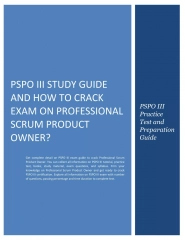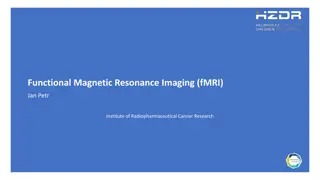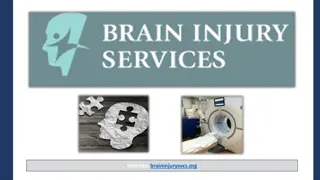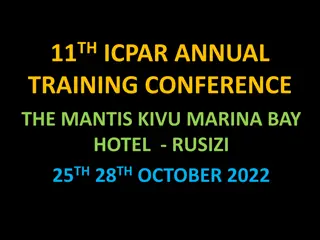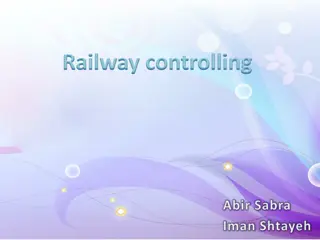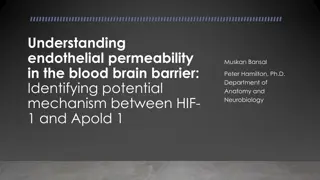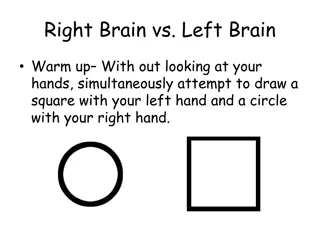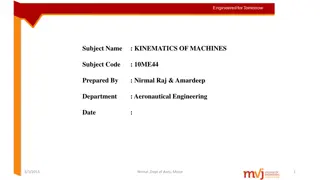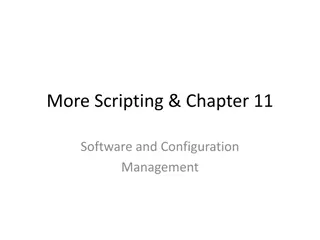
Optimal Corridor and Hub Development - Workshop Insights
Explore the strategic analysis from the BRAIN-TRAINS Workshop focusing on optimal corridor and hub development for intermodal rail freight. Learn about the best-case and worst-case scenarios, policy impacts, and operational changes to make informed decisions. Dive into numerical optimization, cost modeling insights, and the competitive landscape of the intermodal transport industry.
Download Presentation

Please find below an Image/Link to download the presentation.
The content on the website is provided AS IS for your information and personal use only. It may not be sold, licensed, or shared on other websites without obtaining consent from the author. If you encounter any issues during the download, it is possible that the publisher has removed the file from their server.
You are allowed to download the files provided on this website for personal or commercial use, subject to the condition that they are used lawfully. All files are the property of their respective owners.
The content on the website is provided AS IS for your information and personal use only. It may not be sold, licensed, or shared on other websites without obtaining consent from the author.
E N D
Presentation Transcript
BRAIN-TRAINS Workshop III WP2 Optimal corridor and hub development Christine Tawfik, Martine Mostert and Sabine Limbourg QuantOM (Center for Quantitative Methods and Operations Management), HEC Li ge Ghent, 18/09/2017
Agenda 1. Scope 2. Best-case scenario analysis 3. Worst-case scenario analysis 2
1. Scope: Optimal corridor and hub development 1 Objectives: To simulate the optimal setup of national and international intermodal rail freight corridors. To give cost modeling insights to achieve more educated decisions in the future scenarios. Methods: Operations Research. Numerical optimization. Points of focus from the SWOT analysis: Reduced costs and externalities. Strengths High operating costs. Complex pricing strategies. Weaknesses 2 3 3
2. Best-case scenario analysis: Description 1 The impacts of policies and operational changes are probed through a parametric analysis. Decision framework: tactical, medium-term horizon, from an economic perspective of a single service planner. Scenario translation: The inputs are quantified according to the EU White Paper s goals: Inputs Road costs (-10%) Rail costs (-20%) IWWs costs (-10%) Road taxes (+20%) Freight demands (+15%) 2 3 Outputs Modal split, in terms of tkm. + All-road market price, terminal s locations, transport modes average speeds and capacities. 4
2. Best-case scenario analysis: Main conclusions 1 2 Order of economic preference/affordance: road, IWWs then rail -> high rail fixed costs. Positive effect of road costs, IWWs costs and road taxes parameters in the best case. However, overall application yields a more costly position. A directly proportional relation exists between the intermodal market share and the corresponding competition s trucking price and market size. 3 5
2. Best-case scenario analysis: Main conclusions 1 2 3 Positive effect of rail subsidies in the first stages; stagnation reached if continued, particularly in the best case. The competitiveness of intermodal transport is sensitive to the paths structure; namely, the distance limits imposed on the road parts -> pre- and post-haulage. 6
3. Worst-case scenario analysis: Description 1 The impacts of policies are tested through a scenario analysis, which compares the worst-case with the reference scenario. Decision framework: intermodal allocation model at the strategic horizon, for economic and environmental policies. Scenario translation: 2 3 Inputs Inputs Outputs (operational costs) (CO2 emissions and air pollution external costs) Road (-10%) Rail (+20%) IWW (+20%) Transshipment (+20%) Road taxes (+0%) Road (-40%) Rail (-10%) IWW (-10%) Transshipment (-10%) Modal split in terms of tkm 7
3. Worst-case scenario analysis: Main conclusions 1 Worst-case scenario: intermodal market share decreases for economic and environmental optimizations 2 3 The followed policy influences the modal split: Economic optimization: road transport Environmental optimizations: intermodal rail transport Different modal transfers from the reference to the worst-case scenario: Economic optimization: between road and intermodal transport Environmental optimizations: within intermodal transport 8
3. Worst-case scenario analysis: Main conclusions 1 Road taxes Decrease of road market share but not as high as environmental optimizations Lower effect on road market share in the worst-case than in the reference scenario 2 3 Takeaways Influence of the policy on modal split Expected increase of the road market share if the objectives of the White Paper are not taken into account Necessary to adapt the tax instrument to the economic conditions under study 9
Thank you. Questions?




